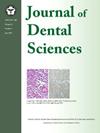Prediction of dental students’ pre-clinical crown preparation performances by a virtual reality haptic-based dental simulator
IF 3.1
3区 医学
Q1 DENTISTRY, ORAL SURGERY & MEDICINE
引用次数: 0
Abstract
Background/purpose
Manual dexterity training is essential for dental students. The implementation of virtual reality haptic-based dental simulator Simodont (Nissin Inc., Nieuw-Vennep, Netherlands) can provide the real-time feedback in pre-clinical learning. The aim of this study was hypothesized that Simodont may act as a valuable assessment tool in predicting the performance of pre-clinical crown preparation.
Materials and methods
This retrospective cohort study was to analyze total 84 dental students' performance among manual dexterity exercises on Simodont, crown preparation on Simodont, and crown preparation test on phantom head. Spearman's correlation coefficient (r) was used to examine the relationships of performances among three groups. Subgroup analysis with dichotomous performance (low/high) and sex difference were further analyzed by chi-square test.
Results
Positive correlation was found between crown preparation test in phantom head and manual dexterity exercises on Simodont (r = 0.390, P < 0.001) and crown preparation on Simodont (r = 0.326, P < 0.01), respectively. Odds ratio analysis showed that students who scored highly with manual dexterity exercises on Simodont were 5.6 times more likely to be high performance in conventional crown preparation test in phantom heads (P < 0.001). Moreover, male students were shown to have stronger correlation between the performances on Simodont and phantom head test (P < 0.001). However, there were no significant correlations among three different test groups were found in female students.
Conclusion
Taken together, our data revealed the potential of Simodont in the prediction of dental students’ subsequent crown preparation test in conventional phantom head.
基于虚拟现实触觉的牙科模拟器对牙科学生临床前冠准备性能的预测
背景/目的对牙科学生来说,手的灵活性训练是必不可少的。基于虚拟现实触觉的牙科模拟器simodon(日清公司,Nieuw-Vennep,荷兰)的实现可以在临床前学习中提供实时反馈。本研究的目的是假设simmodon可以作为一种有价值的评估工具来预测临床前冠制备的性能。材料与方法回顾性分析84名牙科学生在simmodo上的手工灵巧性练习、simmodo上的冠预备和幻影头冠预备试验中的表现。采用Spearman相关系数(r)检验三组绩效之间的关系。亚组分析采用二分类表现(低/高)和性别差异进一步进行卡方检验。结果幻影头冠预备试验与simmodon手灵巧性训练(r = 0.390, P < 0.001)、simmodon冠预备试验(r = 0.326, P < 0.01)呈正相关。优势比分析显示,在simmodon手工灵巧性训练中得分高的学生在传统假头冠预备测试中表现优异的可能性是前者的5.6倍(P < 0.001)。此外,男学生在simmodon和幻头测试中的表现有更强的相关性(P < 0.001)。然而,女生在三个不同的测试组之间没有发现显著的相关。综上所述,我们的数据揭示了simmodon在预测牙科学生在常规虚幻头下的后续冠预备试验中的潜力。
本文章由计算机程序翻译,如有差异,请以英文原文为准。
求助全文
约1分钟内获得全文
求助全文
来源期刊

Journal of Dental Sciences
医学-牙科与口腔外科
CiteScore
5.10
自引率
14.30%
发文量
348
审稿时长
6 days
期刊介绍:
he Journal of Dental Sciences (JDS), published quarterly, is the official and open access publication of the Association for Dental Sciences of the Republic of China (ADS-ROC). The precedent journal of the JDS is the Chinese Dental Journal (CDJ) which had already been covered by MEDLINE in 1988. As the CDJ continued to prove its importance in the region, the ADS-ROC decided to move to the international community by publishing an English journal. Hence, the birth of the JDS in 2006. The JDS is indexed in the SCI Expanded since 2008. It is also indexed in Scopus, and EMCare, ScienceDirect, SIIC Data Bases.
The topics covered by the JDS include all fields of basic and clinical dentistry. Some manuscripts focusing on the study of certain endemic diseases such as dental caries and periodontal diseases in particular regions of any country as well as oral pre-cancers, oral cancers, and oral submucous fibrosis related to betel nut chewing habit are also considered for publication. Besides, the JDS also publishes articles about the efficacy of a new treatment modality on oral verrucous hyperplasia or early oral squamous cell carcinoma.
 求助内容:
求助内容: 应助结果提醒方式:
应助结果提醒方式:


